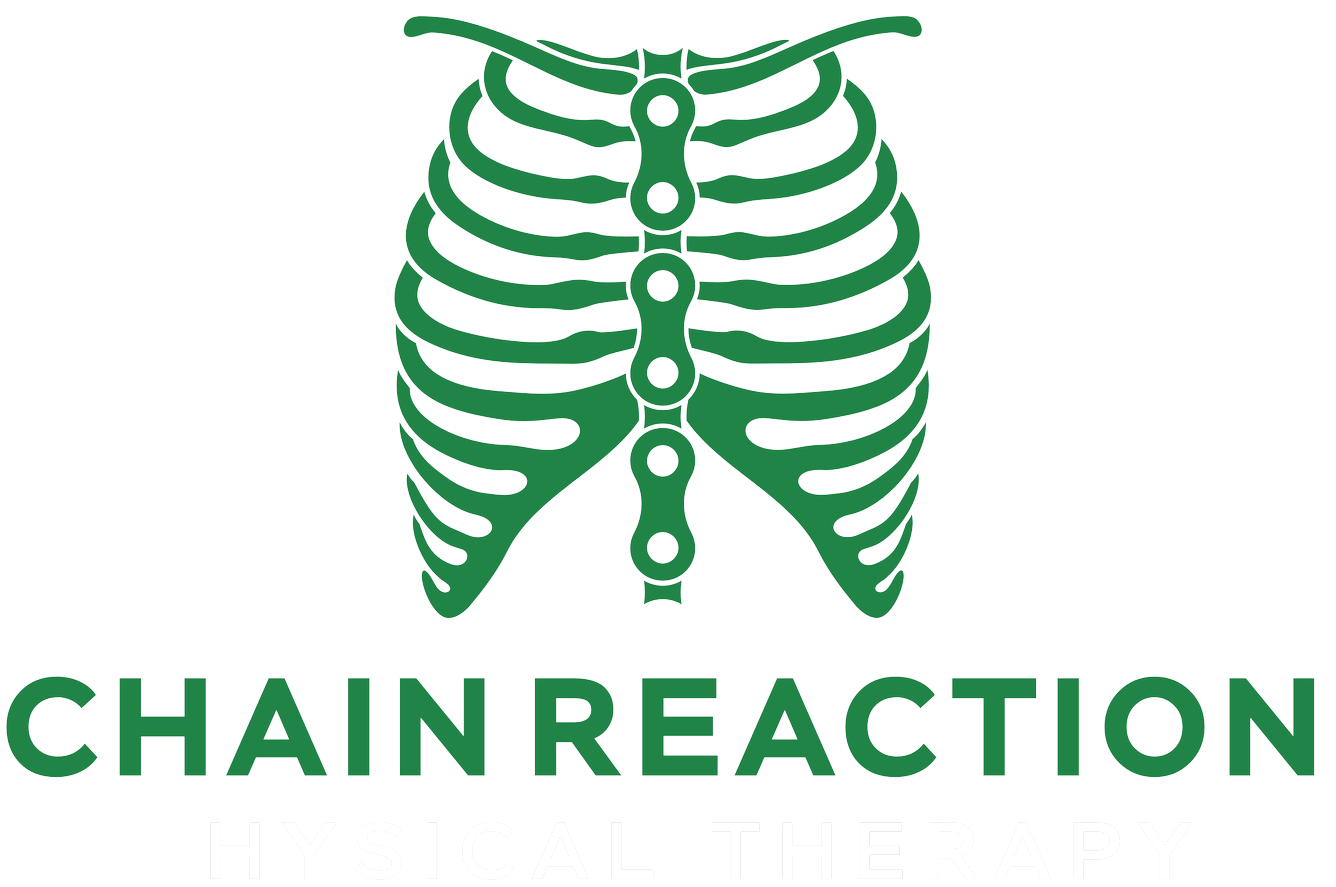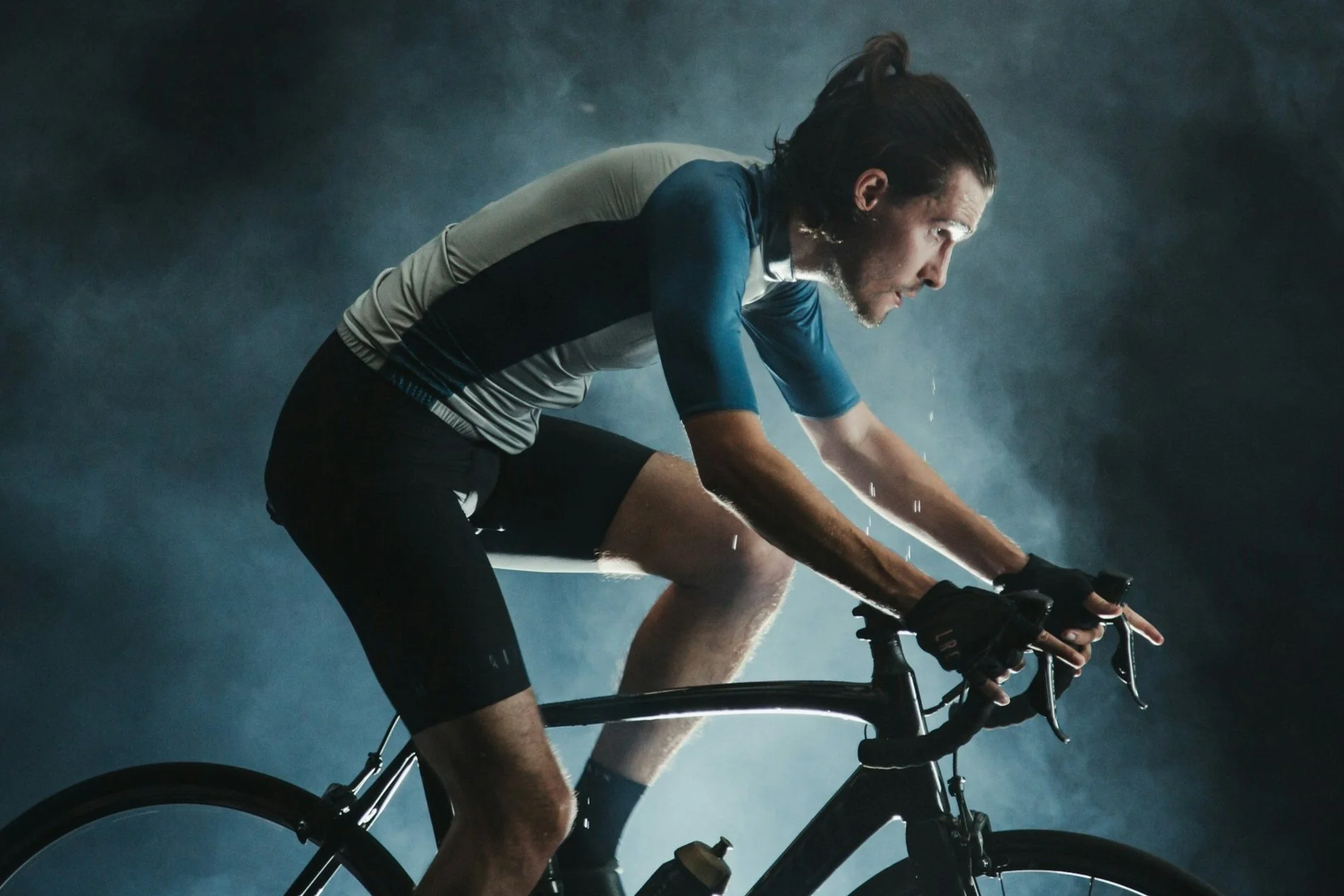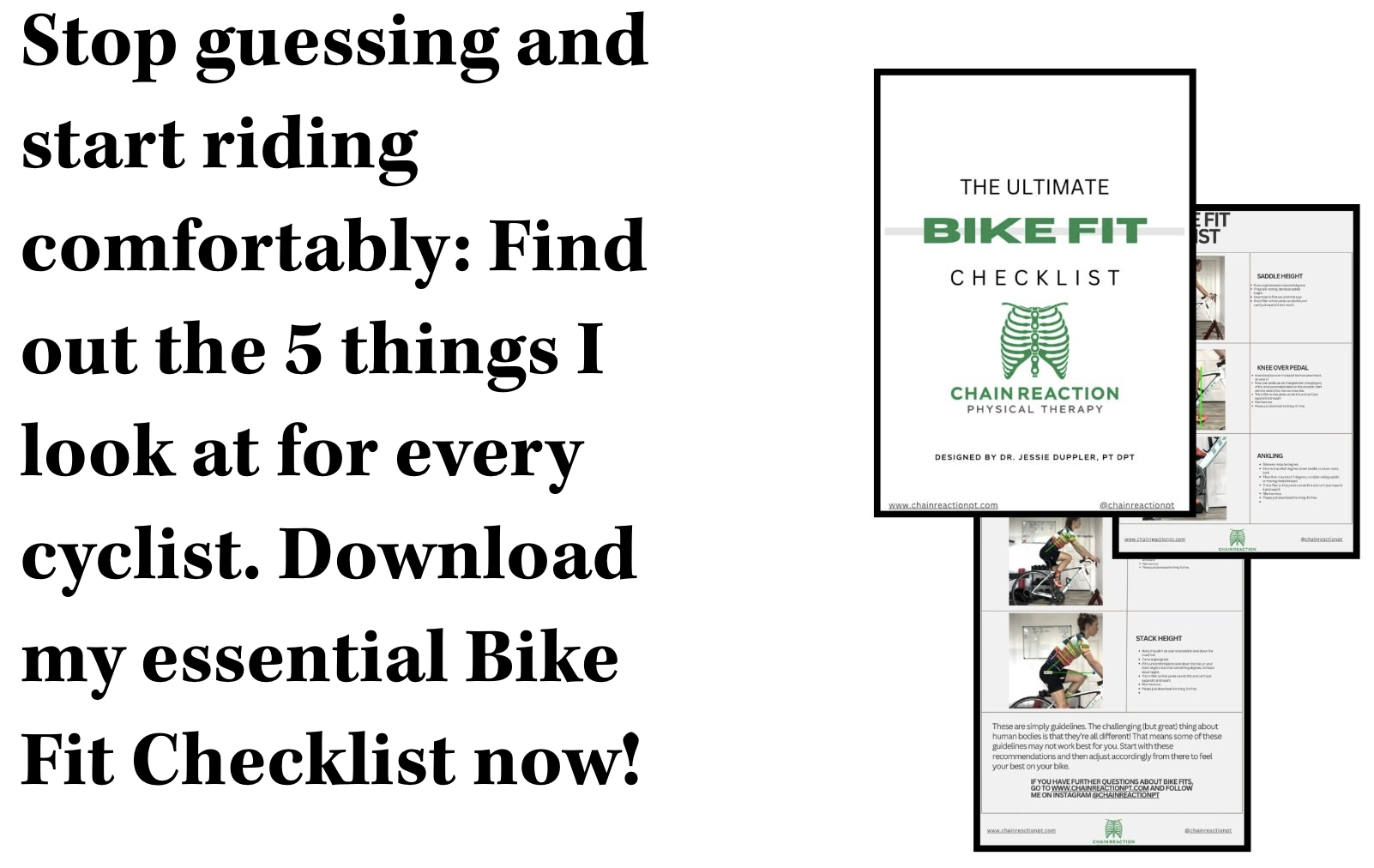Groin Pain From Cycling? What To Do About It.
I see numerous clients who report groin pain from cycling. This can result from two main things:
1. The body’s movement patterns on the bike
2. The bike fit for the body
In this article, I’m going to break down what the two above factors mean, and how you can address them to get rid of your groin pain from cycling.
The Body’s Movement Patterns On The Bike
There are several factors regarding how we move on the bike that can result in groin pain. The first is the back’s position on the bike.
Back Position
If your back is too rounded on the bike, it will cause excessive load through the pubic bone and into the groin, causing excessive pressure into the groin and pain while cycling. Additinally, a rounded back puts extra stress through the lumbar spine. The nerves that pass through the upper lumbar vertebrae innervate the groin. Excessive flexed load through those segments can irritate those nerves and cause groin pain while cycling.
Hip Stability
We need our hip muscles to be stable so that we can place power down into our pedal stroke. If our hip stabilizers aren’t strong, it can result in more hip movement while in the saddle. This places additional shearing force through the groin and leads to groin pain.
Decreased Core Strength
Just like our need for hip stability, we need our core to support the trunk and allow us to drive power into the pedals. If we lack core strength, it can also result in more shifting in the saddle. Additionally, our abdominal muscles connect to the brim of the pelvis and stabilize the hips from below. If they aren’t strong, they result in more pressure through the pubis, soft tissue, and resulting in pain through the groin from cycling.
The Bike Fit For The Body
Saddle Height
If a saddle is too high, it will cause increased shifting off the hips to reach the pedals at the bottom of the pedal stroke, which also results in increased pressure through the groin and soft tissue of the pubis.
Saddle Fore/Aft
If the saddle is too far backward, it was cause the rider to shift forward onto their pubis (front part of their pelvis more) which will place more pressure on to the soft tissue in the front of the pelvis. There isn’t a significant amount of muscle or fat here to cushion the pubis, so extra pressure can lead to pain in the groin with cycling.
Crank Length
Longer crank lengths require better hip mobility (think of a clock with really long hands vs. really short hands; they tell the same time, but the long hands of the clock have to travel a lot further). Longer cranks require the hips to move in a larger amplitude. If your hips don’t have the mobility to do so, it can result in pulling and pain in the groin.
Slammed Front End
If your front end (handlebars and stem) are too low, this requires your trunk to reach down even further. This cuts off your hip angle as you try to rotate through your pedal stroke. This will often cause your knees to “bow” out at the top of the pedal stroke, placing further torque on your pelvis.
Most often, groin pain from cycling results from a combination of how the body moves on the bike and how the bike fits the body. That is why I always recommend my athletes who come see me (to improve how their body moves on the bike) also get a bike fit. When something hurts on the bike, it’s important to look at both variables to ensure pain-free riding.
Liked learning about how to prevent groin pain from cycling? Here are my next steps for you:
1. Read about where your saddle should be to prevent hamstring pain here.
2. Sign up to grab my Essential Bike Fit Checklist below so you can ride confidently and pain free on your next ride!
Join my newsletter fam!
Sign up to get more info about PT, performance, and physical therapy directly into your inbox. When you subscribe, you also gain first dibs on all new courses and offerings!



